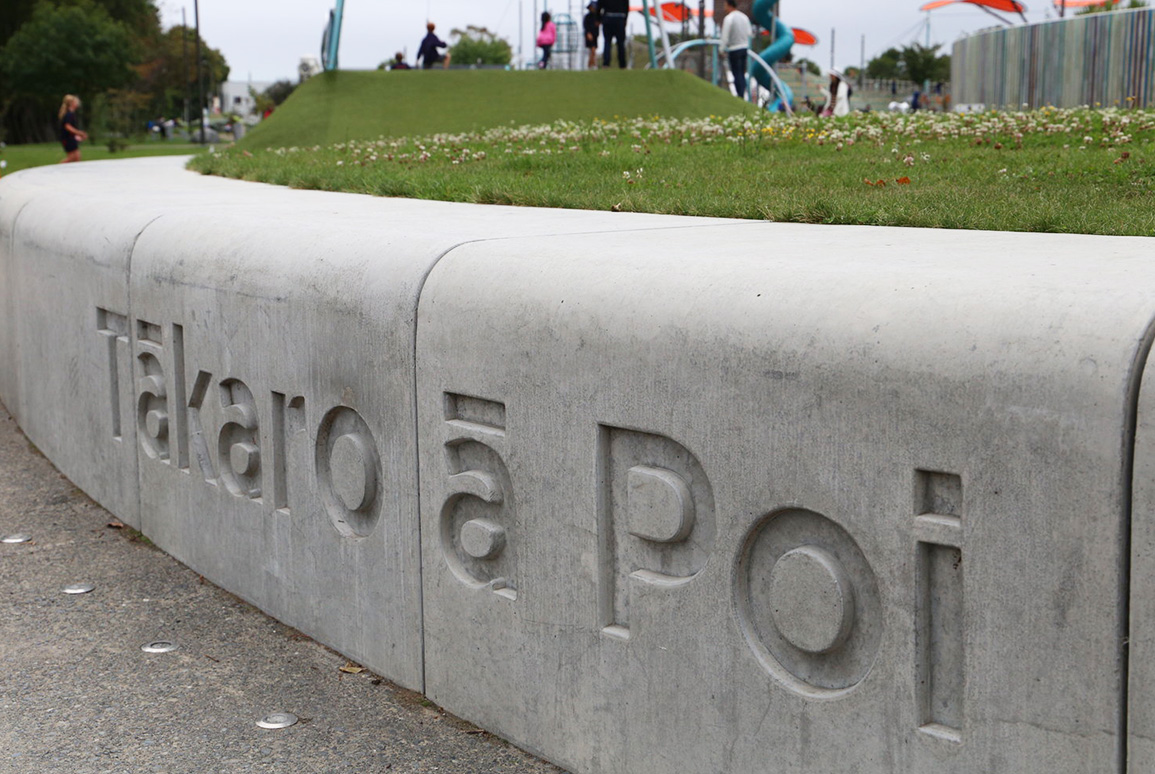The earthquakes of 2010 and 2011 forever changed the landscape of Ōtautahi/Christchurch and its people. Not only was the city plagued by human loss, but the physical void created was reminiscent of a war zone. As the dust settled, it became apparent that there was an opportunity for indigenous values, history, and identity to radically influence the re-design of the city. Fast-forward eight years and the benefit of embedding traditional Māori – or, more specifically, Ngāi Tahu and Ngāi Tūāhuriri - values into the fabric of Ōtautahi has been recognised both nationally and internationally for its catalytic and collaborative approach to design.

During 2018, various anchor projects reached completion. Among these were Hine-Pāka/The Bus Interchange, Te Ara Pū Hā/The South Frame, Te Omeka/Justice & Emergency Services Precinct, and Tūranga/The Christchurch Central Library - the latest to open to the public. These anchor projects support others such as Ngā Whāriki Manaaki/Woven Mats of Welcome, Victoria Square and Tākaro ā Poi/Margaret Mahy Playground. A defining aspect of these projects is the adoption of dual-naming which, when integrated, becomes more than just a name. It also embodies the legacy carried with it.
As tangata whenua (indigenous people) of Aotearoa, Māori have developed a close relationship with Te Ao Tūroa (the natural world). Since the beginning of time they have continuously sought to belong to the land and maintain a reciprocal relationship with it, as opposed to perceiving the land as purely functional or existing only to service themselves. This necessity to remain connected – both physically and spiritually – to place is supported by aspects of design, such as the continuing integration of dual naming into the city’s infrastructure and landscape.
As a Graduate Cultural Advisor in the Te Hīhiri team at Boffa Miskell, with a degree in Landscape Architecture, I believe that collaborating with iwi, hapū and whanau Māori to embed design features and achieve outcomes of cultural significance is incredibly empowering for Māori and non-Māori alike.
When I experience a project in the public realm as a user, and not as a Landscape Architect, there is an immediate intangible, spiritual connection to a place or space that carries a Māori name. As a Māori myself, my mind is immediately flooded with questions like ‘Who, or what, is this building named after? Is there a connection to my own whakapapa [genealogy/lineage]?
In more recent times, the concept of whakapapa has been valued by both Māori and non-Māori designers and continues to arise as a driver behind design decisions. Guidelines such as the Te Aranga Design Principles and Matapopore Urban Design Guide acknowledge whakapapa as being an integral part of, and central to, Māori identity. It underpins a wider system of values expressive of self-awareness, spirituality and self-respect. When carried through to design, whakapapa becomes a way of recognising, celebrating and educating all users on the relationship Māori have with not only their ancestors, but to the landscape – ki uta ki tai, from the mountains to the sea.

Whilst a name on the outside of a building, or on an interpretation panel, may seem like a small contribution, I assume that this name has been gifted by mana whenua [the iwi, hapū or whanau group of a particular area] through a collaborative process. By viewing Māori as ‘co-designers’ it helps to ensure authenticity in the embodiment of our values and beliefs. Personally, as a Māori designer, it’s reassuring to know those who lead the design work have prioritised and acknowledged their shared responsibility to recognising an important culture of this country.
Boffa Miskell’s Christchurch office has encompassed the idea of mana whenua as co-designers during the fit-out of their new office space in the central city. To acknowledge their proximity to significant landscape features such as the Ōtākaro/Avon River - and in alignment with both the work and values of Boffa Miskell as a company – they utilised Ngāi Tahu reference material to develop a suite of names for areas of their office. Feedback and approval was sought by Ngāi Tūāhuriri prior to their adoption and is a constant reminder to staff of their connection to the surrounding landscape and relationship with mana whenua.
Kerry Gupwell, Boffa Miskell chief executive, says, “As a company, the concept of whakapapa underpins and informs what we do, and how we do it. We’ve seen the importance of dual-naming and co-design with mana whenua throughout our project work in Ōtautahi/Christchurch; so, expressing that relationship within our own space exemplifies our company values.”
It continues to be an ongoing process to educate not only decision-makers, but the wider Christchurch population and its visitors, about the importance of embodying Māori values; the benefits of which are quickly being felt and the support continues to grow.
Photos by Mapihi Martin-Paul
This article was first published in Landscape Architecture Aotearoa

